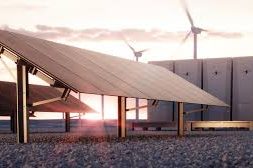
In Short : The India Energy Consumption Council (IECC) projects that India’s energy consumption will rise by 3-4 times over the next decade. This significant increase underscores the urgent need for expanding renewable energy capacity and improving energy efficiency to meet future demand sustainably.
In Detail : Per capita electricity consumption in India is much below the global average, but total electricity demand is growing at 8-9 per cent per year and is projected to double by 2030 if compared with demand in 2020.
Growing industrialization, urbanization, and rising incomes have led to the country’s energy consumption rising rapidly. According to a recent report by India Energy and Climate Centre (IECC) India’s energy consumption is expected to increase three to four-fold in the coming decade.
The report adds that India is projected to be the largest contributor to additional global energy demand between 2020-2040.
In comparison to other industrialized economies, India lags by USD 1-2 trillion in its energy infrastructure investment, which is likely to take place in the next 2-3 decades.
Per capita electricity consumption in India is much below the global average, but total electricity demand is growing at 8-9 per cent per year and is projected to double by 2030 if compared with demand in 2020. Because of global warming and increased pay-out capacity, electricity demand for cooling appliances is projected to increase six-fold by 2040.
The IECC report anticipates that India’s energy demand growth is accompanied by a deep reduction in clean energy technology costs, especially for wind turbines, solar PV cells, lithium-ion (Li-ion) batteries, and hydrogen electrolysers.
India currently has over 130 GW of renewable capacity installed. At the United Nations Climate Change Conference of the Parties (COP-26) in Glasgow in November 2021, Prime Minister Modi announced that India would deploy 500 GW of non-fossil fuel power generation capacity by 2030.
In the past five years, India has added 55 GW of renewable capacity, 18 GW higher than coal-based power plants (27 GW) during the same duration.
In 2020, investment in renewables surpassed investment in fossil fuels for the fifth consecutive year, but there are concerns about the capacity value of Renewable energy generation. Whether renewable energy can generate electricity during peak load periods.
However, coal still accounts for over 70% of electricity generation in India, the country has some of the largest coal reserves in the world. But renewables are now cost-competitive and with thermal power generation throughout India, even in regions previously considered resource-poor for renewable generation.
The report says the cost of co-located solar and storage projects with approximately 2-4 hours of energy storage to meet evening peak demand is projected to be Rs. 3-4/kWh by 2030, which is lower than the variable cost of nearly half (80-100 GW) of India’s existing coal capacity.
Recent large-scale Round-The-Clock power and storage auctions by the Solar Energy Corporation of India (SECI) and National Thermal Power Corporation (NTPC) have demonstrated the cost-effectiveness of energy storage in India.
IECC says “Our analysis has demonstrated that energy efficiency measures could avoid 40-50 GW of additional load during the evening peak hours.”The India Energy and Climate Centre has prepared this report in collaboration with key stakeholders in government, regulatory commissions, and the Bureau of Energy Efficiency.











